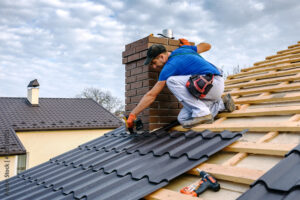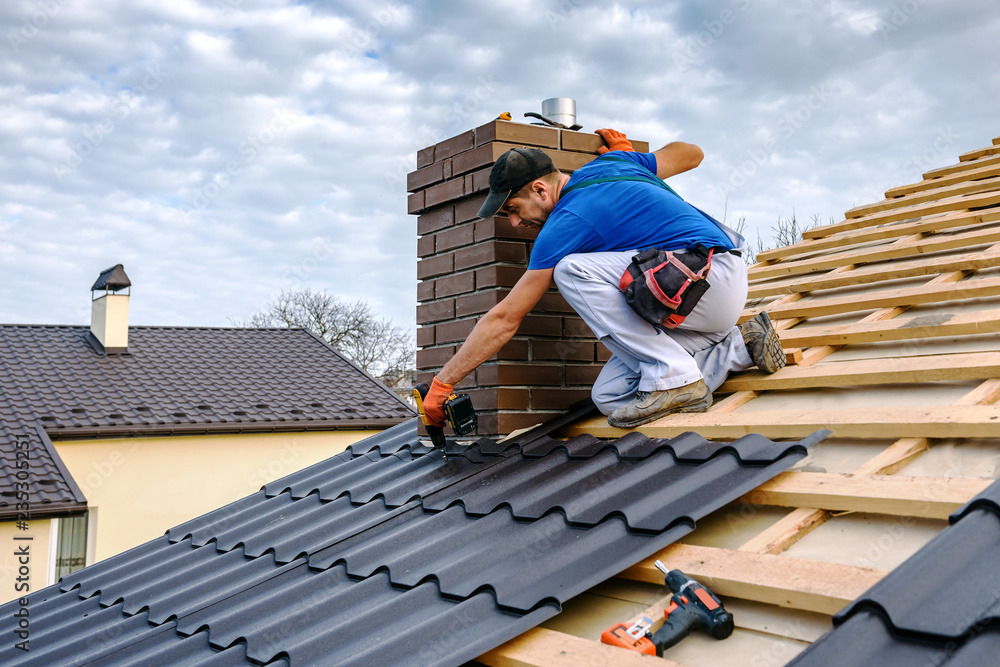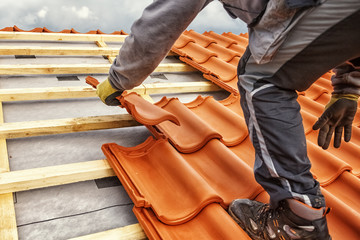Roofs are important structures that protect the inside of buildings from rain, snow, and sun. Roofing comes in a variety of shapes and materials. The process is similar whether you’re building a new home or reroofing an existing one. First, the old shingles are torn off and disposed of.

Shingles are the most recognizable element of a roof, and for good reason. They provide protection and add to the beauty of a home. Whether made of asphalt, wood, clay, or slate, they are designed to overlap and create a barrier that prevents water from penetrating the house. But, as with any material that protects a home from the elements, shingles don’t last forever and will eventually need to be replaced.
There are many shingle types to choose from, all offering different benefits, but the most popular is asphalt shingles. These are available in various colors, designs, and styles. Some are made with organic materials such as recycled paper, rags, or cellulose. Still, most are manufactured with fiberglass mats and coated with an asphalt compound infused with mineral granules to provide added durability and weather resistance.
Other shingle options include wood shingles made of cypress, redwood, or western red cedar, which are resistant to rot. They are usually kiln-dried to minimize warping and may be plain, quartersawn, or hand split with a thick butt end. They can be stained or painted to keep the color, although most are left natural to fade to a silver-like tone over time.
Some shingles have a strip of a thermally-activated adhesive on the bottom that attaches them to other shingles during installation. This adhesive is also used to seal the underside of the shingle to prevent moisture penetration, which could lead to mold, mildew, and wood rot.
While many homeowners choose to install a new shingle roof themselves, it is generally best left to a professional. Especially for complex roofs or high-roof construction, experience is necessary to avoid unforeseen problems and costly mistakes. Also, if you install a more exotic roofing system (like slate or clay), a specialty tradesperson with specialized training is recommended to ensure the job is done correctly.
Roofing underlayment is the secondary layer of protection on your roof deck. It acts as a moisture barrier to prevent rain and other harsh weather from infiltrating your home and damaging the sheathing boards and other roof parts. It also helps to prevent ice dams from building up and destroying your roof, especially in sensitive areas such as eaves, valleys, and dormers.
While some people may consider this an unnecessary extra, a quality underlayment is critical for your roof to perform well. Without one, sheathing boards can quickly deteriorate. If you have an older home with pine or fir sheathing, it’s particularly important to use a fire-resistant underlayment that can help keep your roof safe from potential fire and protect your belongings.
Several types of roofing underlayment are available to homeowners, from traditional asphalt-saturated felt to modern synthetic products. The choice depends on the environment, roof covering, and other factors. For instance, a metal roof requires an underlayment that can handle high temperatures, while a wood or asphalt shingle roof needs something to help resist the effects of fire.
Most roofers prefer using non-bitumen synthetic underlayment, a base mat saturated with asphalt and designed to be used across the entire roof deck. It is also water-resistant and often coupled with waterproof underlayment products. Asphalt-saturated felt underlayment was the standard until a few decades ago, but it started to fade in popularity as more effective synthetic products came on the market.
Felt underlayment is the most commonly used product for residential roofing and was historically available in two weights: 15 pounds per square foot and 30 pounds per square foot. The 15-pound felt was for light projects, and the 30 offered more heavy-duty protection. While it is not fully waterproof, it is very water-resistant and provides an excellent base for the primary roof cover.
Proper underlayment is as vital for your roof’s longevity as the shingles. If you choose the wrong type of underlayment, it can significantly reduce your shingle lifespan and cause damage to the other parts of your roof. If you decide on a new top, consider speaking with an experienced roofing contractor about which underlayment fits your needs and budget.
A thin piece of metal that is highly resistant to moisture flashing is vital to roofing. It’s installed where a roof is most prone to leaks, such as in the areas where walls meet the ceiling, penetrations, valleys, and edges. Roof flashing is typically made from galvanized steel.
When properly installed, flashing seals the gaps between a shingled roof and any wall, penetration, or edge of the house. It prevents water and ice from entering these critical areas. In some older homes, the lack of or poorly installed flashing has led to serious and expensive structural damage.
Professional roofers install the flashing in various configurations depending on where it’s needed. For example, it’s used to protect the area where a dormer is attached to a sloping roof and to prevent rain from running down the side of the building. This type of flashing is called dormer flashing, and it comes in the form of square pieces that are added between every row of shingles or other roofing material.
Other kinds of flashing include chimney, pipe, and step flashing. These are often pre-fabricated and come in different shapes to suit cladding and roof designs. They can also be fabricated to a custom shape where necessary.
For example, chimney flashing is usually curved to match the shape of a chimney. Pipe flashing is designed to fit the cylindrical contour of pipes. Step flashing consists of pieces of flashing material overlapping in “steps,” It’s frequently used to waterproof the joints at dormers, roof penetrations, and walls.
If you have leaky walls or ceilings, it’s important to have a professional inspect your roof. They can help determine whether the problem is caused by missing or faulty flashing or if another issue is to blame.
A qualified roofer can assess the state of your roof, recommend any repairs, and provide you with a free estimate. To learn more or schedule a roof inspection, contact Hedrick Construction in Huxley, Iowa, serving Ankeny and surrounding areas.
Ventilation is moving air through a space to control moisture and temperature levels. It is essential for building and room comfort and ensuring indoor air quality (IAQ). This can be accomplished through natural, mechanical, or hybrid ventilation.
Many people are familiar with natural ventilation. Opening a window on a hot day or using the bathroom exhaust fan to draw moisture from the shower are common examples of natural ventilation. In addition to controlling humidity, natural ventilation can reduce energy costs and extend the life of shingles and other roof components.
Intake vents are typically found in the soffits of a home, while exhaust vents are often located on the roof’s ridge. Both types of vents can be used to provide a balanced ventilation system that is suitable for most homes.
Without ventilation, heat can build up in the attic. When this heat comes into contact with shingles, it can damage them and shorten their lifespan. This is why it is so important to have a well-ventilated attic.
When a roof is not properly ventilated, the heat can also cause ice dams in the winter. These ice dams can tear down gutters, soffits, and shingle tabs. They can even damage the insulation inside a home, leading to mold and mildew. Proper roof ventilation prevents this by allowing the hot air to escape into the attic while cooler air moves in to take its place.
Suppose you want to add ventilation to your home or update the existing ventilation. In that case, it is best to use a professional roofer who can provide the right type of vents for your particular roofing system. In addition to providing a balanced approach, they will also ensure that you have enough vents for the size of your attic. The more attic space, the more vents you need to ensure proper ventilation. In addition, the location of intake and exhaust vents is also critical. Intake vents should be as close to the source of odors or pollutants.





 The roof is one of the most important parts of your home or building. It protects the residents and their belongings from the elements, including wind, rain, snow and extreme temperatures. An updated, sturdy roof makes a home more attractive to potential buyers and can increase its value. It can also help save on energy costs. In addition, a new roof can come with a manufacturer warranty lasting two to 25 years.
The roof is one of the most important parts of your home or building. It protects the residents and their belongings from the elements, including wind, rain, snow and extreme temperatures. An updated, sturdy roof makes a home more attractive to potential buyers and can increase its value. It can also help save on energy costs. In addition, a new roof can come with a manufacturer warranty lasting two to 25 years.